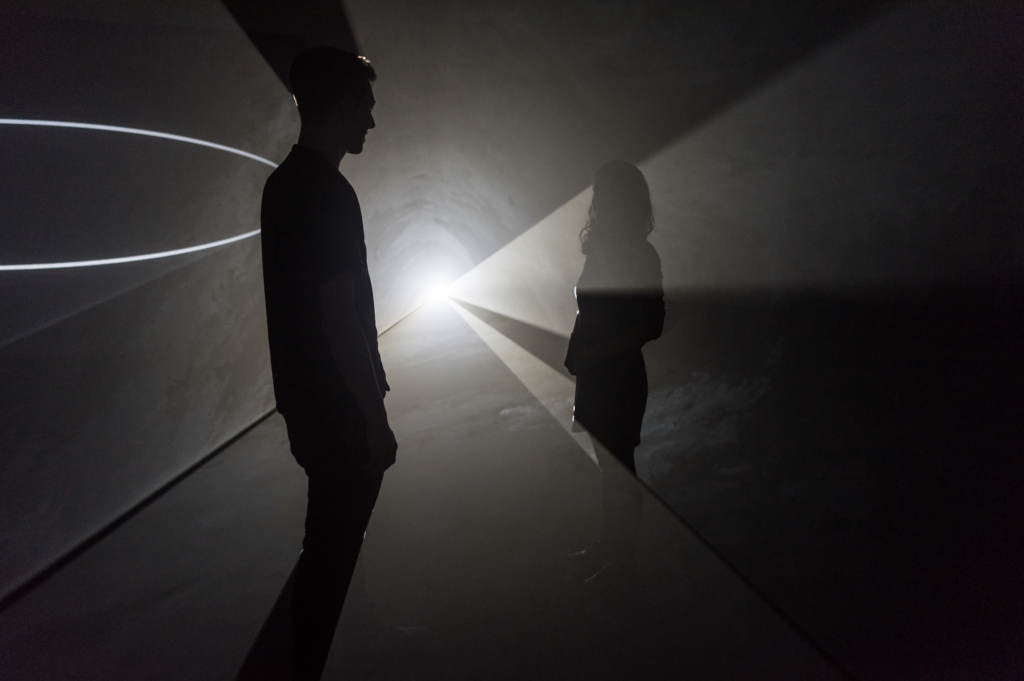Cover photo: Visitors look at Face to Face, 2013 by Anthony McCall at The Hepworth Wakefield, 2018. Courtesy of the artist, Sprüth Magers, and Sean Kelly, New York/Los Angeles. Photo by Darren O’Brien/Guzelian.
The Tate Modern in London is currently hosting the exhibition Solid Light, which is dedicated to the extraordinary light installations of Anthony McCall. Born in 1946, McCall pioneered experimental cinema and installation art, best known for his works where light becomes a three-dimensional sculpture. Open until April 27, 2025, the exhibition invites visitors to engage with his light-based works, offering an immersive experience.
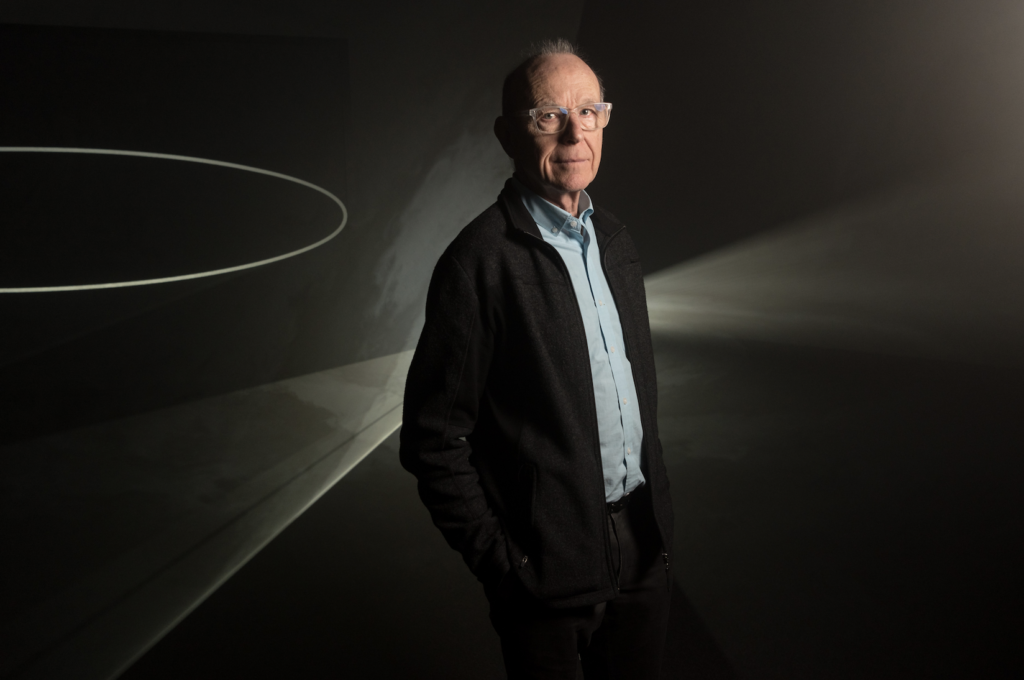
The Artistic Evolution of Anthony McCall
Anthony McCall began developing his artistic practice in the early 1970s during his involvement with the independent film community in London. In 1973, he moved to New York, where he started exploring the boundaries between sculpture and cinema.
His most famous work, Line Describing a Cone (1973), was the first installation in his Solid Light series. In this piece, McCall uses a film projector and 16mm film to challenge cinematic conventions, focusing on the shape of light rather than projected images.
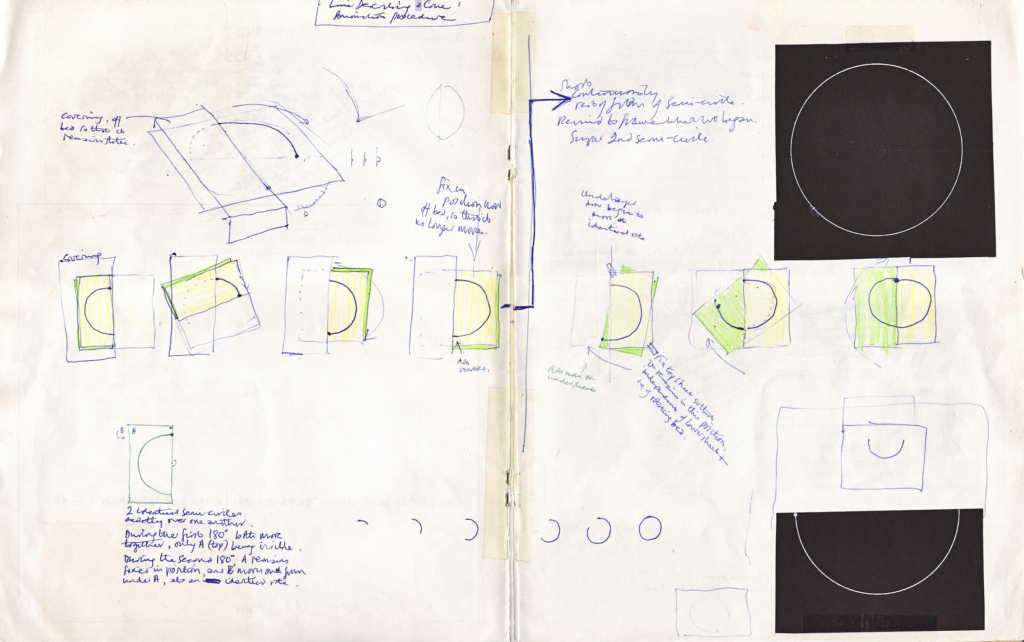
By the late 1970s, McCall had withdrawn from the art world, but he resumed his practice in the early 2000s, taking advantage of new technologies. Fog machines and digital projectors have allowed him to create more complex and tactile works.
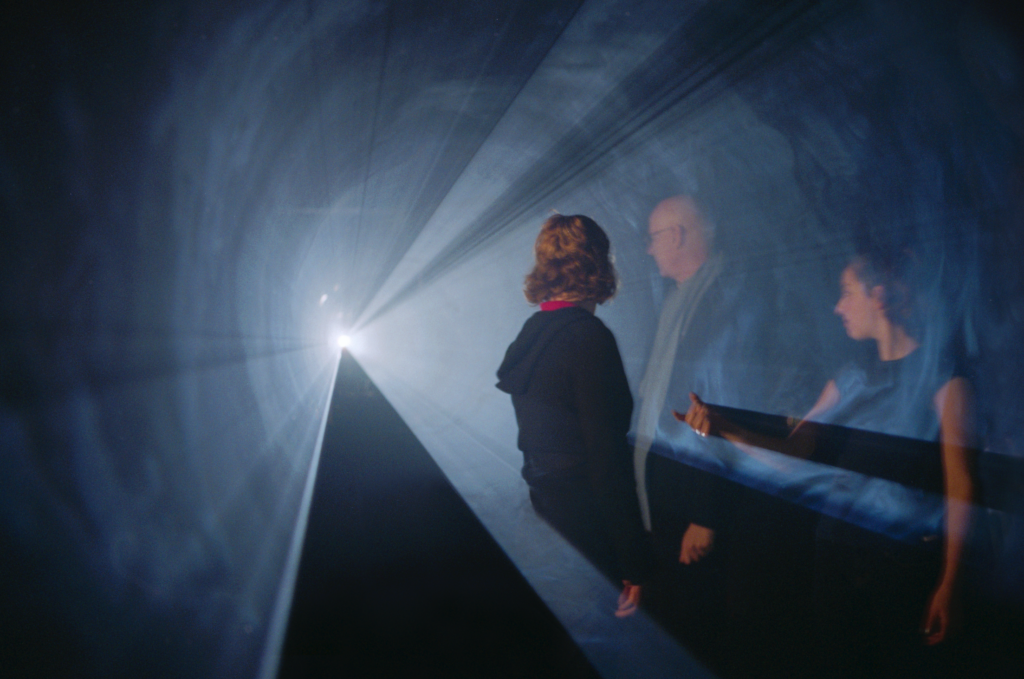
The Immersive Light Experience at Tate Modern
The exhibition at Tate Modern provides a unique insight into Anthony McCall’s artistic universe, exploring how light, space, and time are employed to transform the visual experience. The works on display include photographs and films from McCall’s early performances, such as the significant Landscape for Fire (1972). In this performance, participants lit fires arranged in a geometric grid, reflecting McCall’s interest in the conflict between the unpredictability of nature and mathematical order.
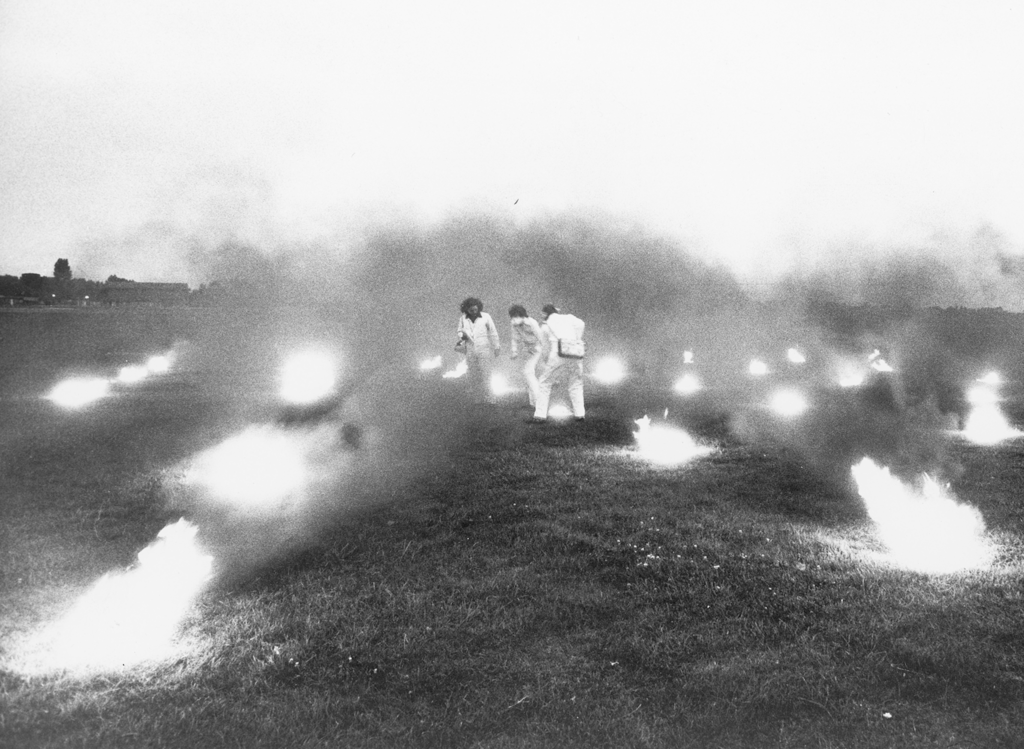
Also featured is Doubling Back (2003), which reinterprets the Solid Light concept for the 21st century, and Face to Face (2013), where light forms intertwine in innovative ways.
The exhibition concludes with Split-Second Mirror (2018), one of McCall’s most recent and visually complex works. By using a mirror to interrupt a plane of light, the piece creates two identical light cones, facing in opposite directions, producing a visually intriguing and disorienting effect.
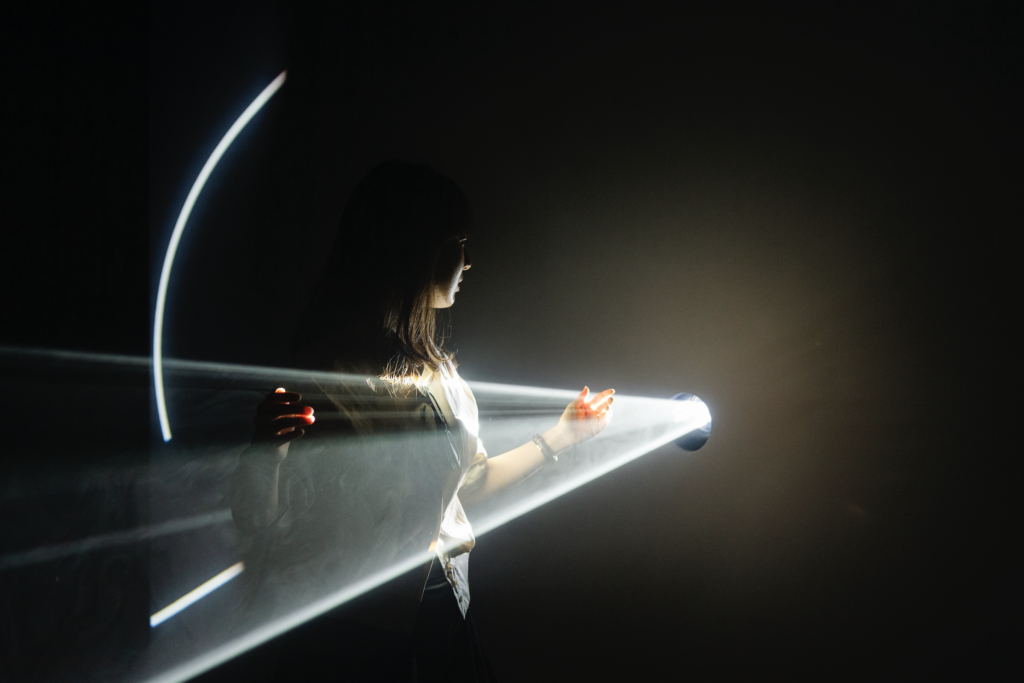
Anthony McCall’s Art of Light
McCall’s work combines space and architecture, creating environments brought to life by light and the interaction of the people within them. His practice is simultaneously cinematic and luminous, using light transition and refraction to shape the experience. The installations offer a unique visual experience and encourage visitors to reflect on the power of light as an artistic medium, continually reinventing how we perceive the world around us.
